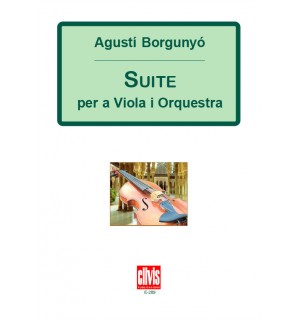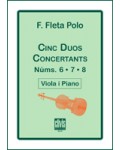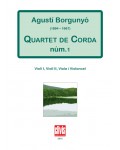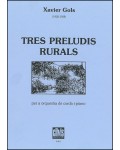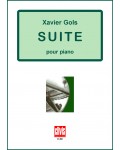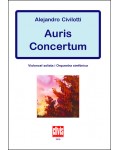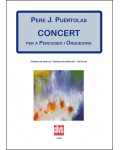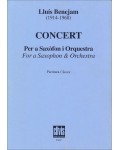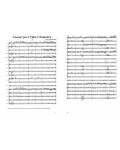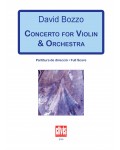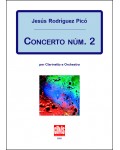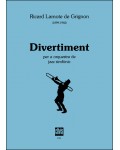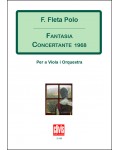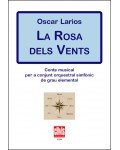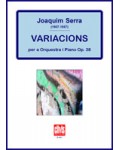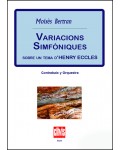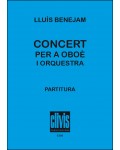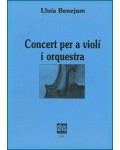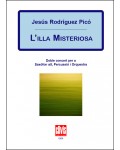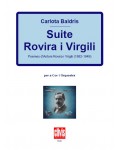
No products
Prices are tax included
Product successfully added to your shopping cart
There are 0 items in your cart. There is 1 item in your cart.
- English
- Castellano
- Català
Suite per a viola i orquestra
DE289
La Suite per viola i orquestra is imbued with the air of Hispanic festivity and Andalusian folklore which was so fashionable in the mid-20th century and is so appreciated by audiences around the world. Agustí Borgunyó displays a total mastery of orchestration as well as an exquisite taste for approaching the various themes without ever giving into the temptation of easy effects.
| Period | 20th c. |
| Subheading / Parts | Introducció - Dansa - Recitativo - Gitanerias - Cançó i Finale |
| Instruments | va solo-2222 - 4330 - timp+2perc - arp - pf - archi |
| Pages | 160 |
| Time | 25 min |
| Contents | Score and viola part |
| ISMN | 979-0-3502-0574-3 |
| Remarks | The parts of orchestra are available in rent regime. Contact the publishing company (info@clivis.cat). |
| Price of print edition | 35,88€ |
| Orchestras | si |
| Edition | Digital |
The ease with which Agustí Borgunyó works with symphonic orchestras is the result of the hundreds of scores he composed and arranged for large orchestra ensembles during his musical career in the United States. By the 1930s, he had already been artistic director of various orchestras, for which he had composed all kinds of works. From 1934, however, he started working for Alfred Wallenstein – who would later conduct the Los Angeles Philharmonic Orchestra – who commissioned him to write Hispanic-style works. It was at this time that Borgunyó composed the Suite per a Viola under discussion, as well as other works such as Danza ibérica (Iberian Dance), Nocturno sevillano (Sevillian Nocturne) and Suite ibérica (Iberian Suite).
The Suite per a viola i orquestra is dedicated to the great violinist and conductor Milton Katims (1909-2006), and is imbued with the air of Hispanic festivity and Andalusian folklore which was so fashionable in the mid-20th century and is so appreciated by audiences around the world. Borgunyó displays a total mastery of orchestration as well as an exquisite taste for approaching the various themes without ever giving into the temptation of easy effects. Far from that, he shows that he is perfectly acquainted with the genre and that his inspiration for creating gypsy themes is never-ending. The work is approached like a suite rather than a concerto, since its five movements are dominated by dance tunes and, although the viola parts are obviously difficult, there is no attempt to seek virtuoso solo playing at any price.
The piece is written for full orchestra (including harp and piano) and starts with an introduction in which the viola is presented in the lowest register with a brief and expressive theme. The second movement is based on a binary rhythm dance written with graceful and good-humoured themes which transmit joy from the first bar. The viola dances with almost improvised interventions, with many lyrical passages, standing out over the various colours extracted by the composer from the symphonic ensemble. Although the work’s orchestration is brilliant throughout the piece, it is particularly noteworthy in this movement. The third movement is a recitative in which the viola shows its most expressive resources accompanied by few instruments; in fact, at the beginning and at the end it is accompanied only by the piano. Halfway through the movement, there is a short cadenza with very effective arpeggios and arpeggiated chords. The fourth movement, Gitanerías, presents a spectacular deployment of rhythmic material, often reinforced by the intervention of the castanets, with an air of fun or scherzo on which the viola conducts a dialogue with the orchestra, again brilliant and full of energy. The fragment ends with a quejío (literally, complaint) by the solo viola, which links this part to the last movement. The fifth movement starts with a song whose passionate tune turns into a joyful and colourful celebration with a frantic rhythm which does not relent until the end of the piece. The solo viola’s last intervention uses the instrument’s full tessitura and, far from seeking the easy effect of a forceful ending, the work ends on a diminuendo over a magical chord.
David Puertas

